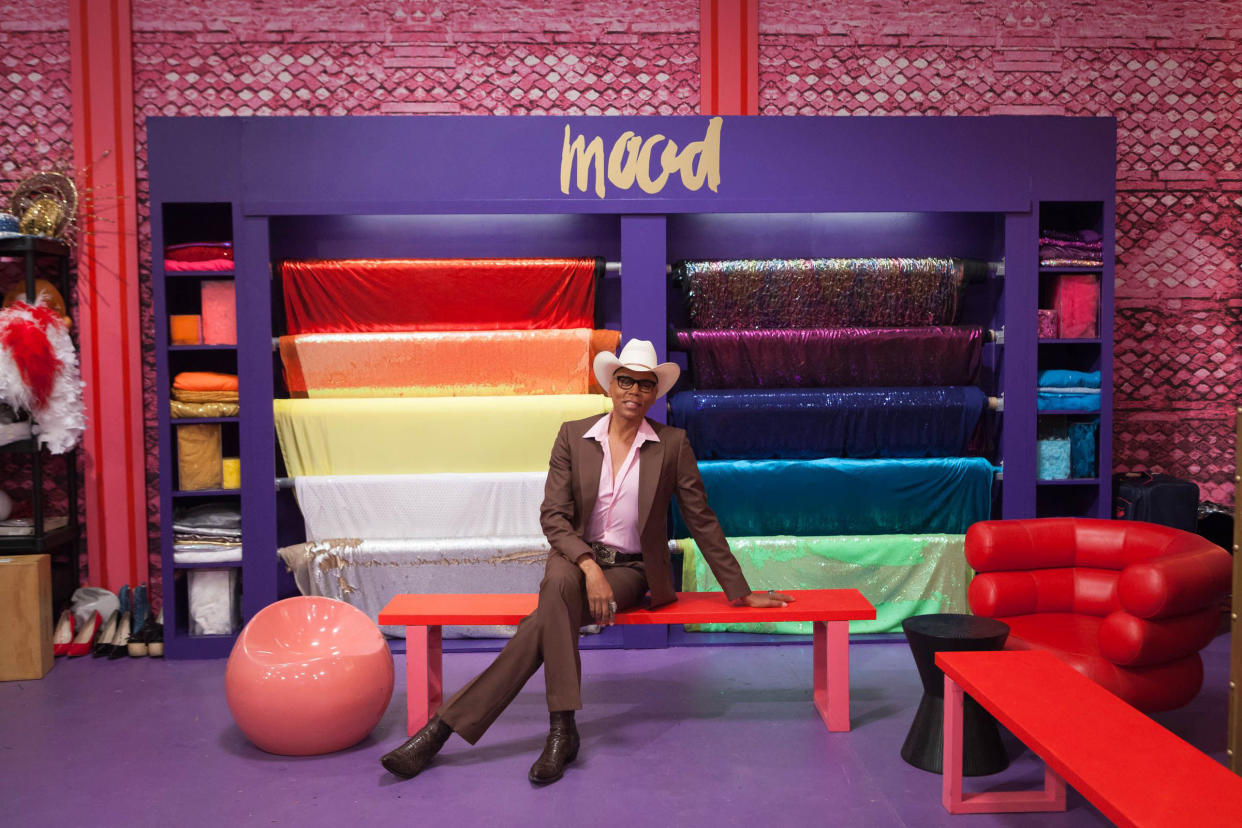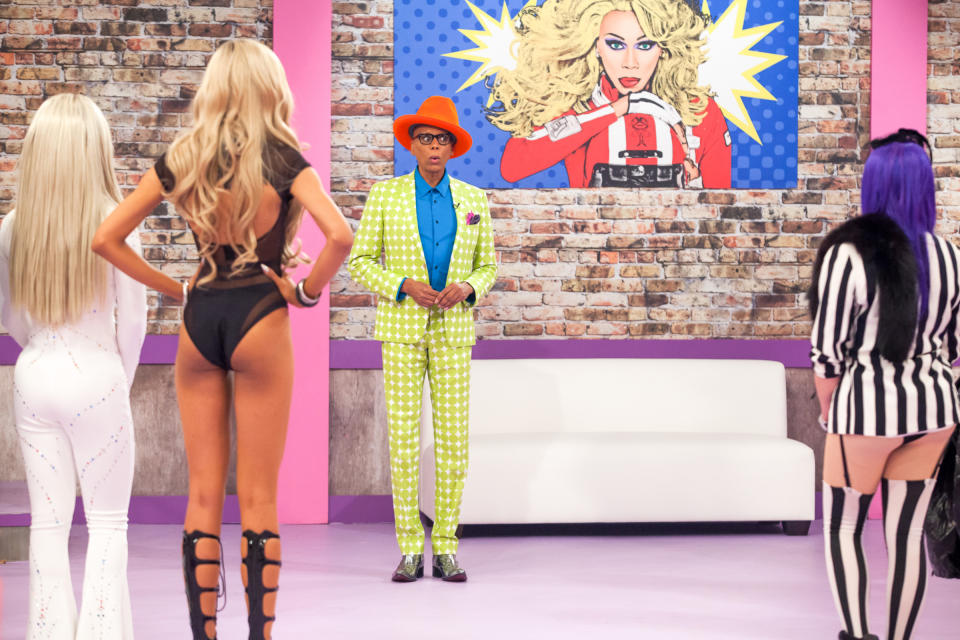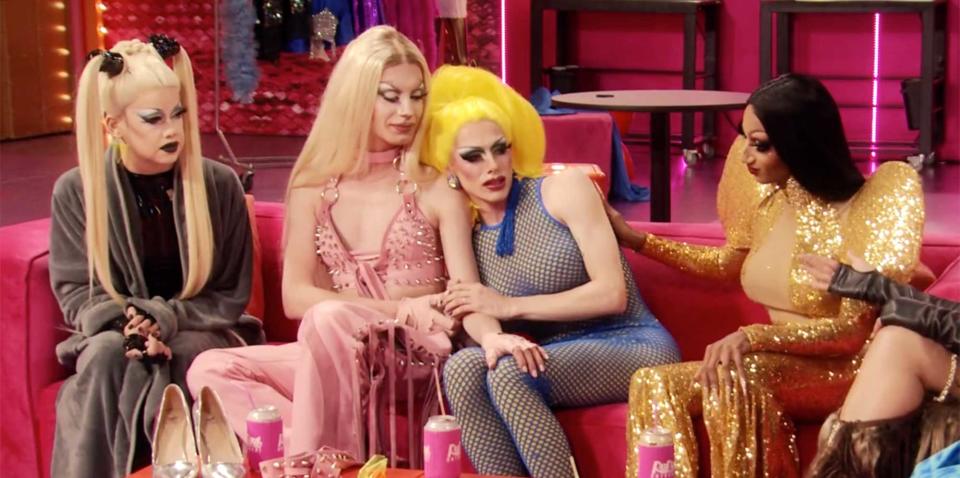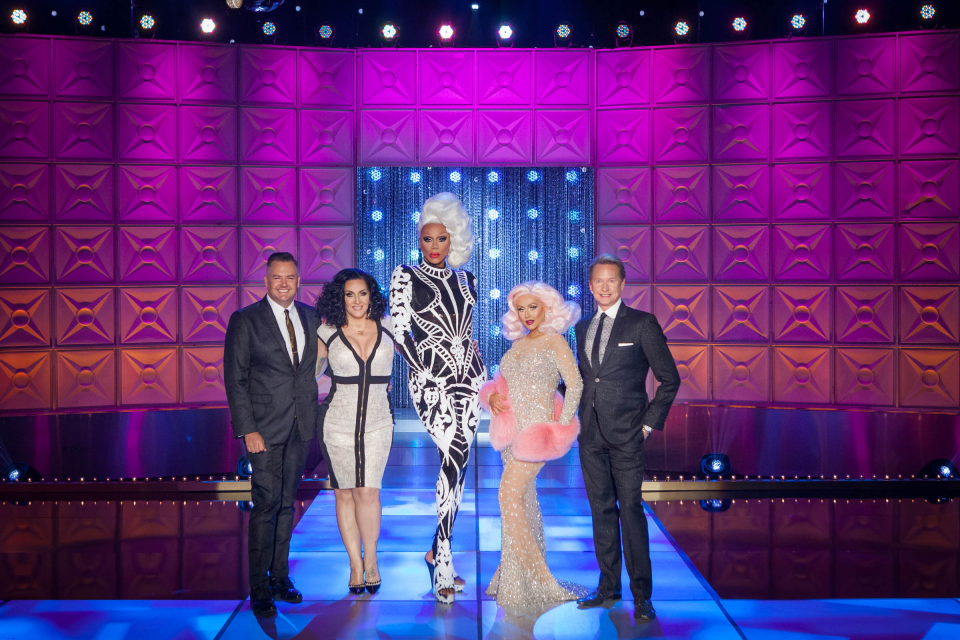‘RuPaul’s Drag Race’ Keeps Things Spontaneous with Rigorous Prep Work

- Oops!Something went wrong.Please try again later.
At a certain point in history, the sun never set on the British Empire. Now that’s true of RuPaul’s Empire, with at least one version of “RuPaul’s Drag Race” always in production. Executive producer Tom Campbell has traveled the world for different iterations of the reality series and credits the franchise’s success to the goal (on a broad structural level and in micro-moments) of making RuPaul Charles laugh.
“It takes a lot of pre-planning and then you have to be incredibly in the moment when things go differently or there’s an opportunity,” Campbell told IndieWire. He often acts as connective tissue between Charles and the show’s small army of producers so that filming can roll with any audibles called by the host, guest judges, or queens.
More from IndieWire
Netflix's Paris Theater Is Now the Biggest Dolby Atmos Cinema in Manhattan
'Frasier' Revival Teaser: Kelsey Grammer Raises a Glass to a Fresh Start
The crew of “Drag Race” has built invisible infrastructures around the joyful spontaneity of Charles and all of the queens; this support becomes all the more important as the show’s challenges ramp up in scope and complexity each year — resulting in nine 2023 Emmy nominations. For Season 15’s Rusical episode, “Wigloose,” production sound mixer David Nolte had to organize everything from playback during rehearsals to recording vocals to continuing to do his normal job across the “Drag Race” shoot.
Nolte generally feeds sound to the camera operators so that they can hone in on the storylines and create the perfect frame around the queens even in the controlled chaos of a challenge or the free-flowing reality segments. Nolte also makes sure producers like Campbell are coordinating with Charles and the guest judges so they can hear everything they need to at “listen stations” placed throughout the set. For this year’s ’80s-tastic Rusical, grabbing clean audio from everyone’s wireless mics was a huge challenge.
“There are certain situations where we’re not able to just get in and fix it or say, ‘Hey, [remember] your mic,’” Nolte told IndieWire. “One of the things that helps us is, a lot of times if there’s a problem and somebody’s carrying on a conversation with somebody else, the other mic will actually pick up their voice. That’s kind of our backup.”
“I came from a music background and I always sort of equate being in a band with being on set,” Nolte added. “If you look at the camera operators as a band and you think about bands when they’re getting their monitor mixes, some people are gonna be like, ‘Oh yeah, that sounds fine,’ and others are gonna complain. The proudest moment I had on ‘Drag Race’ was a few years ago when the director of photography thanked me for my work. He said, ‘All the operators are talking about how good you are and how they have what they need immediately.’ That was a big deal because we’ve all done this for so long.”

“Wigloose” is Gabe Lopez’s fourth Rusical episode as the music mixer and as a producer; Lopez took the lyrics written by Campbell and fellow producers John Polly and Michael Seligman and enmeshed himself in ‘80s instrumentation and musical references to create a full musical experience.
“Producing means I’ve taken these piano sketches and built them up to play the drums and bass and all the instruments. And with that in mind as a mixer, I’m thinking about the levels of all the instruments as they pertain to each other and to the scene; then sonically, how does that serve the whole vision of the project?” Lopez told IndieWire. “So we have those gated snares that hit really hard, the synth bases, all these ’80s sounds. And how we treat the audio was a big part. With [the producers making] the lyrics as great as they did, [I needed to make] sure those are never lost and make sure the vocals sit on top, whether it’s one vocal or 40, like in the finale of the final piece of the show.”
The balancing act of making sure each layer of each song is legible is a challenge that has allowed Lopez to use all the tools in his skillset, from integrating instrumental swells to making adjustments to the sonic landscape that shine the spotlight exactly where it needs to be at each section of each piece.
“[You’re] figuring out sonically what serves the song, the vision of the whole Rusical, and what doesn’t take away from the message of the song. It’s kind of like a bunch of puzzle pieces,” Lopez said. “So you have this one song that’s very upbeat and you have a lot of synths. Well, how do you make that fit with this ballad that is piano and a lot of background singers? And so you find, ‘OK, I can sneak in this live bass that’s over here and use that over here.’”

The process of assembling sound for “RuPaul’s Drag Race,” whatever the size of the challenges in a given episode, finally comes down to the post-production sound team and therefore to re-recording mixers Erik Valenzuela and Sal Ojeda. It is Valenzuela and Ojeda who are responsible for shaping a lot of how we interpret interactions between the queens; sometimes that’s through a well-placed sound effect to punctuate a joke or a dramatic moment, sometimes it’s through more invisible sound repair work so that something important to the story of an episode doesn’t get lost.
“We always have to be aware of what the style of the main challenge is and try to recreate that as much as possible,” Ojeda told IndieWire. “Part of the fun of working on the show is that it’s a little bit of everything.”
“Whether it’s the Rusical or it’s the standup comedy stuff, we look at the episode and we’re like, ‘All right. Here we go. This is the feel of the show, you know?’ And then we get all the elements into the box and make it sound as best we can. And it’s a surprise every time,” Valenzuela said.
Valenzuela and Ojeda are able to create sonic environments that get closer and closer to the genres and modes of performance the main challenges are riffing on. “When we do the standup comedy episode, we try to make everything feel like it’s live, like in an improv studio or club or something,” Valenzuela said. “When we get the sound elements, they might be a really clean mic so we just give it a little bit of fuzz, of going over a PA or going through the speakers, a little bit of walla to keep the live feeling we’re trying to project to the audience.”

For all the episodes, and especially the run-up to the Rusical, Valenzuela and Ojeda are one of the last chances to shape the story through the ways they sculpt the dialogue, giving us a sense of the chaos of the workroom when the episode needs and making sure that key pieces of dialog are always clear. “It’s a lot of carving out frequencies and levels and making room for the lead vocals at that moment that is driving the story or the comedy or whatever the situation is,” Ojeda said.
As “Drag Race” has become more ambitious, Valenzuela and Ojeda have been able to do more to craft fun sonic environments and use sound to support both the drama and the comedy. “I love just the progression of the equipment that we use and the plugins that are out there and the software; it’s awesome just how fast [our computers are now]. Processing used to render something in minutes before, now it’s seconds. So like all that time that you’re saving just sometimes gives you more time to work on the fun stuff: adding sound effects or just enhancing something,” Valenzuela said.
Over the years, everyone who works on “RuPaul’s Drag Race” has been moved by the exponential response to the show. Campbell calls the franchise a tree that was allowed to grow out of a crack in the sidewalk. It flourished by being consciously different from a lot of the reality programming around it.
“It was the 2000s and everything was celebrity. Anyone who had been famous in the ’90s had their own reality show,” Campbell said of the era in which the show premiered. When first approached to join the reality programming parade, Charles quickly ruled out one possibility: a competition elimination show.
“That’s when Simon Cowell was mean. That’s when there were lots of, like, Joe Millionaires and lots of like ‘gotcha’ shows and [Charles] didn’t want that. So we really set out to do something that celebrated the art of drag. And we also thought that because drag samples life, drag samples pop culture and puts it in a fun house mirror and reflects back onto the world, that’s what we’re going to make,” Campbell said. “So much of pop culture is queer culture. You know, it’s the music, the trends, and we wanted drag race to premiere on Bravo after ‘Project Runway.’ We had high hopes for it, and we were a little taken aback that [the show launched on Logo]. Which turned out to be the perfect place for it because it could grow, it could develop. And it became something that people discovered.”
Best of IndieWire
Where to Watch This Week's New Movies, from 'Blue Beetle' to 'The Adults'
The 50 Best Sexy Movies of the 21st Century, from 'Spring Breakers' to 'X'
Sign up for Indiewire's Newsletter. For the latest news, follow us on Facebook, Twitter, and Instagram.

